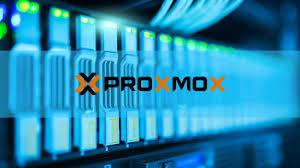Implementing different types of storage in Proxmox can be a bit complex, but it is essential for creating a flexible and high-performance virtualization environment. In this tutorial, we will cover the different types of storage that can be used in Proxmox, and how to set them up for use with virtual machines.
Local storage
Local storage: Local storage is the simplest type of storage to set up in Proxmox. It is the storage that is directly attached to the Proxmox host. To set up local storage, you will need to create a new storage in the Proxmox web interface by going to Datacenter -> Storage -> Add -> Directory. You will need to specify the path to the local storage and a name for the storage. Once you have created the storage, it will be available for use when creating new virtual machines.
Network storage
Network storage: Network storage is storage that is accessible over the network. This can include storage on another server, or on a NAS device. The most common types of network storage in Proxmox are NFS and iSCSI. To set up NFS storage, you will need to create a new storage in the Proxmox web interface by going to Datacenter -> Storage -> Add -> NFS. You will need to specify the IP address or hostname of the NFS server and the path to the storage. To set up iSCSI storage, you will need to create a new storage in the Proxmox web interface by going to Datacenter -> Storage -> Add -> iSCSI. You will need to specify the IP address or hostname of the iSCSI target, and the name of the LUN.
Cloud storage
Cloud storage: Cloud storage is storage that is provided by a cloud provider, such as Amazon S3 or Google Cloud Storage. To set up cloud storage, you will need to create a new storage in the Proxmox web interface by going to Datacenter -> Storage -> Add -> Cloud. You will need to specify the cloud provider and the credentials for the storage.
DRBD storage
DRBD storage: DRBD storage is a type of network storage that is designed for use in high-availability clusters. It allows for data to be mirrored between two servers, so that if one server fails, the other will take over. To set up DRBD storage, you will need to install the DRBD software on the Proxmox hosts, and then create a new storage in the Proxmox web interface by going to Datacenter -> Storage -> Add -> DRBD. You will need to specify the IP addresses or hostnames of the DRBD servers, and the path to the storage.
Conclusion
Once you have set up your storage, you can create virtual machines and assign the storage to them. It is also possible to move virtual machines and their storage between different storage types.
It is important to note that the storage configurations and setup may vary depending on the Proxmox version and the storage type, be sure to check the official documentation for the latest and most accurate information.
 1239
1239


